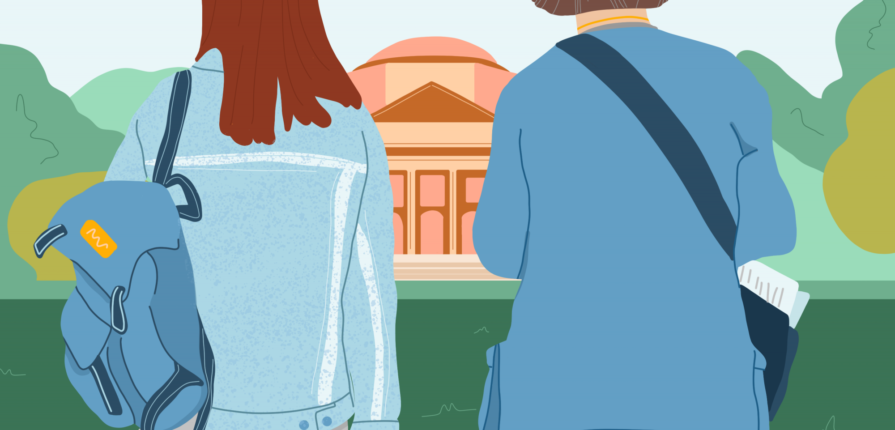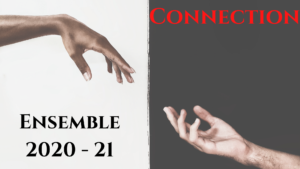A pandemic is raging and been so for more than a year now. Back in November 2020, UNESCO reported that several million children have been impacted. In the last six months, while schools in other parts of the world have reopened physically – either partially or completely; in India, schools continue to operate in an online mode, with no visibility on when we will physically reopen. A lot has been said about the way schools and teachers have had to reimagine learning and classroom transactions in the virtual mode. While this will need to continue, in parallel, we now also have the additional responsibility of carefully planning for physical reopening of Schools. While this certainly entails a very thorough look into the safety procedures and protocols including considerations towards the use of spaces, vis-a-vis the number of students & the purpose of each space; periodic sanitisation schedules, consistent temperature checks and so on; equally important is the focus on the kind of learners we will receive back into our spaces.
So, what is the post-lockdown / post pandemic student likely to look like?
In delving into this, there are two questions that come to mind-
What is the likely socio-emotional state of this learner likely to be like?
What is the learning loss this learner is likely to have had?
How we all wish there was one straight textbook response to these key questions. While we do not completely know the answer to these questions, these two questions are very pertinent for every educator and care-giver of the learner, to consider.
Let us look a little into what research tells us.
One of the first things that comes through clearly is that it may not be possible to completely predict the impact of this pandemic on children, as yet. Previous studies on the impact on student learning, have been done only on the effect of natural disasters and on what has come to be termed as ‘summer learning loss’ – the time that students go on a vacation. So, what has made it difficult to predict the impact this time around? It is the extent of COVID-19 , which is unprecedented. Previously, schools have not had to remain physically closed for this long; however despite physical closure, there has been online instruction, hence it is not completely the case of absolute loss of learning.
Despite the lack of data and the ability to rely completely on past research, there are certainly some things that are clear.
Over the past 15 months, new words have entered the vocabulary of children- words such as lockdown, isolation, quarantine, testing are now common parlance. The word positive has taken on a different turn – from meaning“: optimistic, confident, hopeful, upbeat“, as defined by the Collins dictionary, this word is most likely to mean that one has caught the deadly disease – what a difference to the meaning of a word; when when placed in an entirely different context.
As we emerge out of lockdown, whenever that will be; It is this “context” that as adults- both educators and care-givers, that we must seek to understand.
What is the context from which our students are returning to Schools? It would be important to consider some critical questions.
Have they been in nuclear families with little interaction with other people; over the past many months due to the busy work schedules of the parents?
How about isolation, quarantine, loss that they may have encountered in their close circles? In what ways and to what extent has that affected their emotional and psychological state?
What new habits may have been gained?
What habits may they have lost?
While there has long been a call for a more consistent focus on holistic education – one that encompasses the socio-emotional learning alongside the focus on academic learning; this has come into light even more; in these times.
Let us look at some of those things that we could and must do as Schools, as we begin to receive students who have been both literally and figuratively locked away for several months!
The first thing would be to begin to hold psychologically safe spaces for children. One where children would feel comfortable to reach their deepest emotions and be able share their feelings.
Schools have always been spaces that are not only a destination for academic learning, but one in which crucial social skills are learnt. It is through play with peers that acts of taking turns, listening to the speaker, negotiation, resolving conflicts, accepting failure are learnt. Not having had enough opportunities for play, it is then likely that children would have perhaps forgotten social codes of behaviour – Anticipating the loss of these skills and creating time and space for rebuilding these simple, yet crucial social skills is the next important thing for us to focus on.
The third thing to focus on is the building of relationships through consistent interactions. Enough has been said about a human being a social animal – the last 15 months and the months to follow are one that has presented us with the condition of having to remain at a distance from family, friends and loved ones. This is the exact opposite of what age-old accepted social interaction practices are. Focussing on the physical environment at School that allows for formal and informal discussions and conversations amongst peers and teachers would be necessary.
One of the things that is likely to have happened over the course of this pandemic is a loss of purpose for many students. A School has been perceived by many learners in their sub-conscious minds, as a place of social interactions; one that allows for them to come together to meet, play and enjoy with their peers – the academic learning is more a by-product of this social interaction. Having been in an online environment for many months, one that doesn’t really allow for the same kind of social interactions; it is now likely that as students emerge out of the pandemic they have lost their sense of purpose. Additionally, students who have experienced personal losses are likely to feel even more purposeless. Building a sense of purpose through goal-setting and celebrating small wins would need to now become a part of the mainstream curriculum and this is the fourth thing that we would need to focus on.
Fifth – one of the lessons from the pandemic and online learning has been the need for humans to build self-efficacy – learning to believe that we are capable of doing something and taking action towards that is a crucial skill. Focussing on self-management skills of time management, spatial awareness and making informed choices would be important to help build self-efficacy.
Lastly, it is, of course, possible that there are learners who have got gaps in their learning of academic concepts. These would need to be addressed too, through tailored assessments and are individual-based.
Focussing on each of this would, of course, need a large-scale , carefully curated ongoing professional development for teachers. While it would be good for Government agencies to look at this large-scale training, equally important is, for every School leader to recognise the context of their individual institutions and identify areas of focus for their returning students and related professional development requirement of their staff.
One thing is clear – if the last 15 months has been a roller coaster for educators and educational institutions ; the ride only gets more high-speed, gruelling and thrilling. So, lets fasten our seat belts and ride this journey together.




